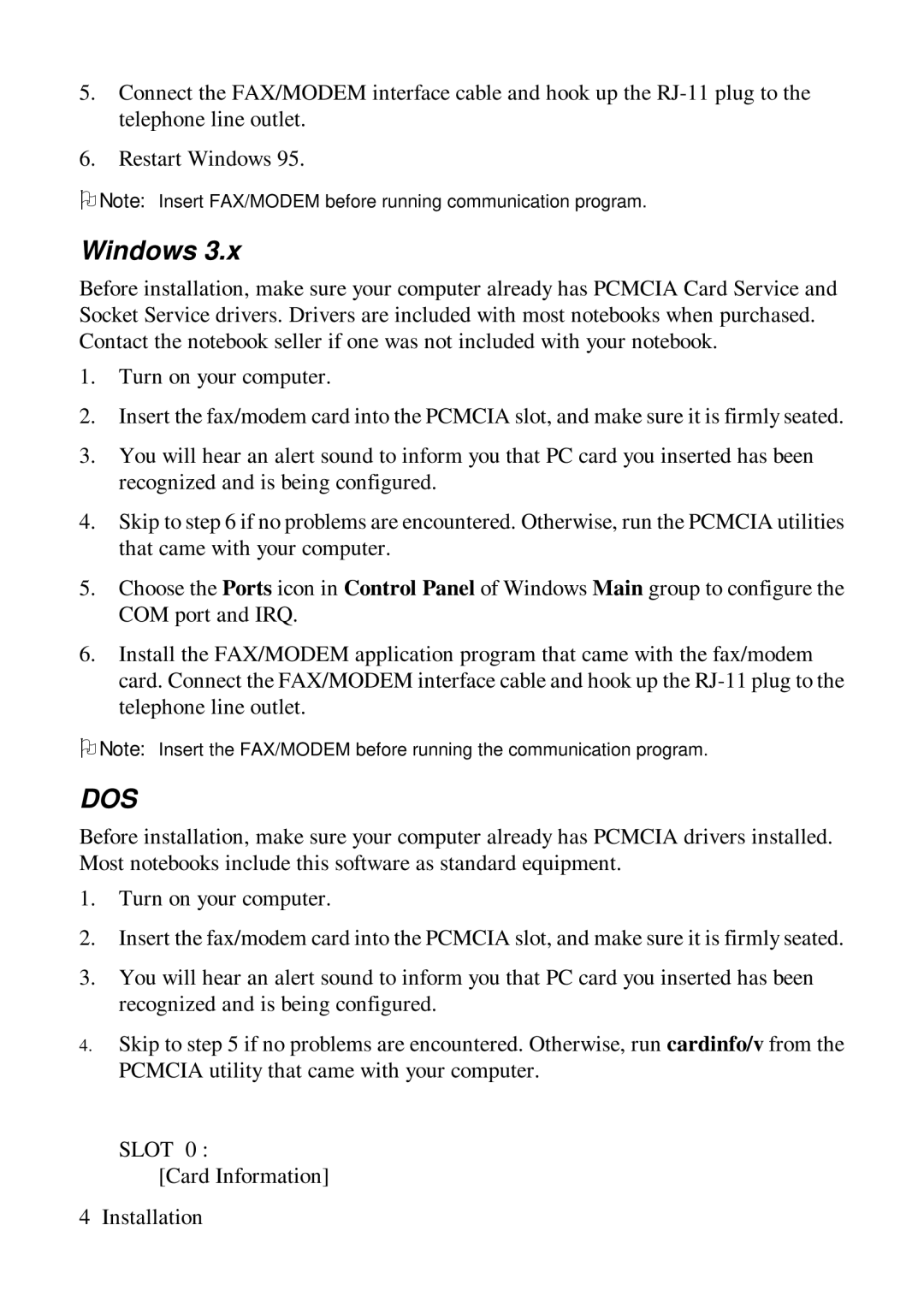5.Connect the FAX/MODEM interface cable and hook up the
6.Restart Windows 95.
ONote: Insert FAX/MODEM before running communication program.
Windows 3.x
Before installation, make sure your computer already has PCMCIA Card Service and Socket Service drivers. Drivers are included with most notebooks when purchased. Contact the notebook seller if one was not included with your notebook.
1.Turn on your computer.
2.Insert the fax/modem card into the PCMCIA slot, and make sure it is firmly seated.
3.You will hear an alert sound to inform you that PC card you inserted has been recognized and is being configured.
4.Skip to step 6 if no problems are encountered. Otherwise, run the PCMCIA utilities that came with your computer.
5.Choose the Ports icon in Control Panel of Windows Main group to configure the COM port and IRQ.
6.Install the FAX/MODEM application program that came with the fax/modem card. Connect the FAX/MODEM interface cable and hook up the
ONote: Insert the FAX/MODEM before running the communication program.
DOS
Before installation, make sure your computer already has PCMCIA drivers installed. Most notebooks include this software as standard equipment.
1.Turn on your computer.
2.Insert the fax/modem card into the PCMCIA slot, and make sure it is firmly seated.
3.You will hear an alert sound to inform you that PC card you inserted has been recognized and is being configured.
4.Skip to step 5 if no problems are encountered. Otherwise, run cardinfo/v from the PCMCIA utility that came with your computer.
SLOT 0 :
[Card Information]
4 Installation
